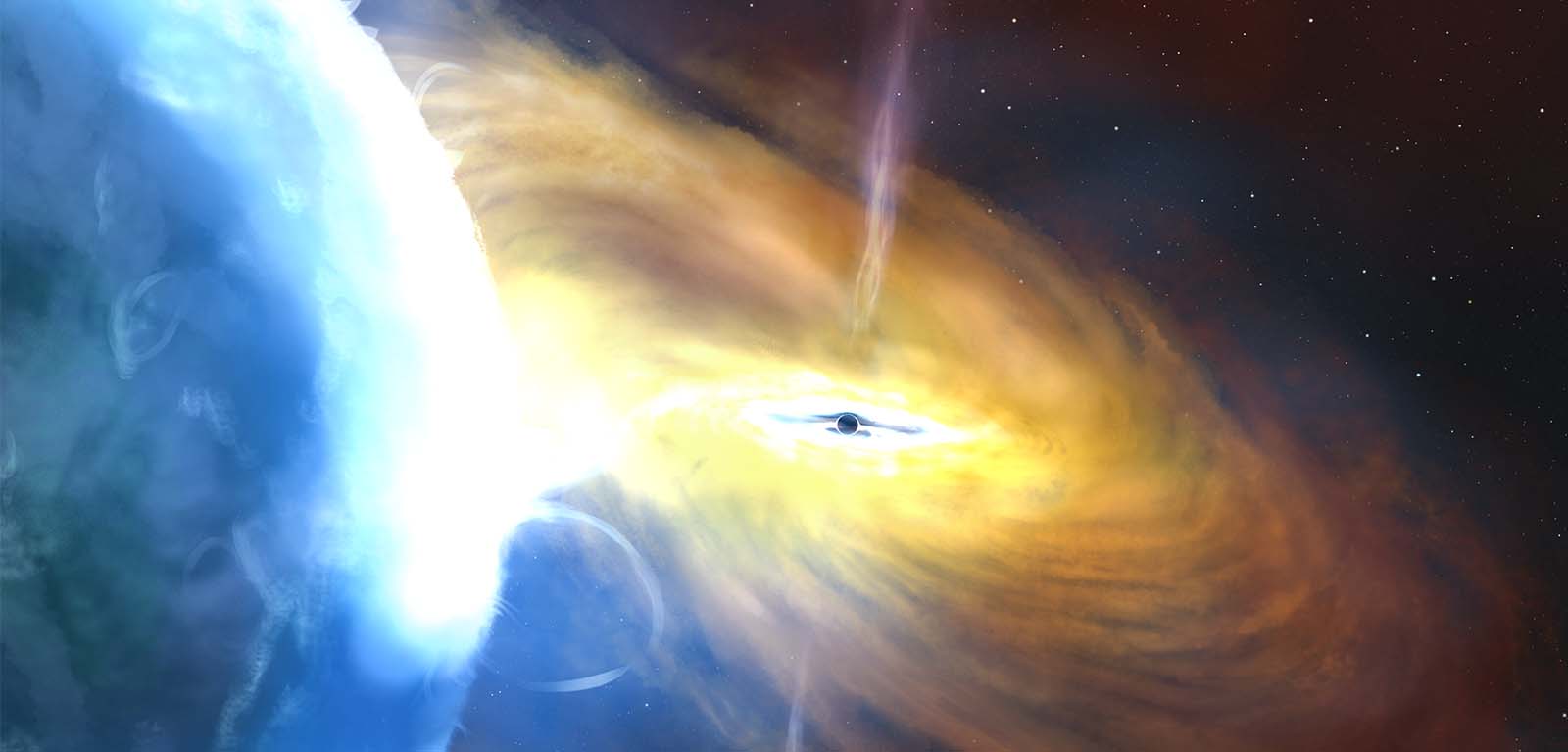Astronomers reveal the largest cosmic explosion ever seen
Astronomers at Queen’s University Belfast have played a key role in uncovering the largest cosmic explosion ever witnessed.

An investigation, which was led by the University of Southampton, in collaboration with Queen’s University, revealed an explosion which is more than ten times brighter than any known supernova (exploding star).
It is also three times brighter than the brightest tidal disruption event, where a star falls into a supermassive black hole.
The explosion, known as AT2021lwx, has currently lasted over three years. Most supernovae are only visibly bright for a few months.
It took place nearly eight billion light years away, when the universe was around six billion years old, and is still being detected by a network of telescopes.
Using the Asteroid Terrestrial-impact Last Alert System (ATLAS) in Hawaii, the Queen’s University researchers led the search for cosmic explosions and were able to process and analyse huge amounts of data.
After detailed analysis, the researchers now believe that the explosion is a result of a vast cloud of gas, possibly thousands of times larger than our sun, that has been violently disrupted by a supermassive black hole.
Fragments of the cloud would be swallowed up, sending shockwaves through its remnants, as well as into a large dusty ‘doughnut’ surrounding the black hole. Such events are very rare and nothing on this scale has been witnessed before.
Dr Matt Nicholl from Queen’s helped to analyse the brightness of the explosion. He comments: “At first, we thought this flare-up could be the result of a black hole consuming a passing star. But our models showed that the black hole would have to have swallowed up 15 times the mass of our Sun to stay this bright for this long.
“Encountering such a huge star is very rare, so we think a much larger cloud of gas is more likely. Many massive black holes are surrounded by gas and dust and we are still trying to work out why this particular black hole started feeding so vigorously and so suddenly.”
PhD student Michael Fulton, who was involved in analysing the ATLAS data, explains: “The Asteroid Terrestrial-impact Last Alert System (ATLAS) is a network of robotic telescopes in Hawaii, South Africa and Chile. They work in tandem to observe the entire night sky every night. No other telescope system in the world has this kind of sky coverage, and Queen’s has the luxury of processing the data collected by these telescopes to hunt for cosmic explosions.”
In this latest discovery, astronomers at Queen’s worked through the enormous amount of images that these telescopes gathered. ATLAS first spotted AT2021lwx back in November 2020, and has been observing it every few nights for the last two and a half years. The data shows that the explosion was nearly 100 times brighter than all the stars in our galaxy combined.
Last year, a team of researchers led by Michael Fulton also witnessed the brightest explosion on record - a gamma-ray burst known as GRB 221009A. While this was brighter than AT2021lwx, it lasted for just a fraction of the time, meaning the overall energy released by the AT2021lwx explosion is far greater.
The findings of the research have been published today [Friday, 12 May 2023] in Monthly Notices of the Royal Astronomical Society.
Discovery
AT2021lwx was first detected in April 2020 by the Zwicky Transient Facility in California, and subsequently picked up by ATLAS a few months later. These facilities survey the night sky to detect transient objects that rapidly change in brightness indicating cosmic events such as supernovae, as well as finding asteroids and comets. Until now the scale of the explosion has been unknown.
“We came upon this by chance, as it was flagged by our search algorithm when we were searching for a type of supernova,” says Dr Philip Wiseman, Research Fellow at the University of Southampton, who led the research. “Most supernovae and tidal disruption events only last for a couple of months before fading away. For something to be bright for two plus years was immediately very unusual.”
The team investigated the object further with several different telescopes: the Neil Gehrels Swift Telescope (a collaboration between NASA, the UK and Italy), the New Technology Telescope (operated by the European Southern Observatory) in Chile, and the Gran Telescopio Canarias in La Palma, Spain.
Measuring the explosion
By analysing the spectrum of the light, splitting it up into different wavelengths and measuring the different absorption and emission features of the spectrum, the team were able to measure the distance to the object.
“Once you know the distance to the object and how bright it appears to us, you can calculate the brightness of the object at its source. Once we’d performed those calculations, we realised this is extremely bright,” says Professor Sebastian Hönig from the University of Southampton, a co-author of the research.
The only things in the universe that are as bright as AT2021lwx are quasars - supermassive black holes with a constant flow of gas falling onto them at high velocity.
Professor Mark Sullivan, also of the University of Southampton and another co-author of the paper, explains: “With a quasar, we see the brightness flickering up and down over time. But looking back over a decade there was no detection of AT2021lwx, then suddenly it appears with the brightness of the brightest things in the universe, which is unprecedented.”
Media
For media inquiries, please contact emma.gallagher@qub.ac.uk